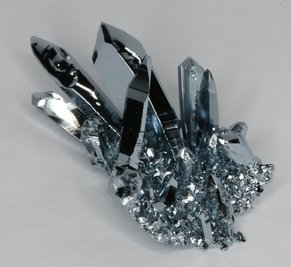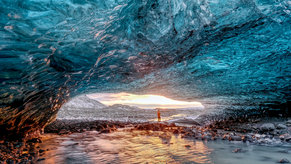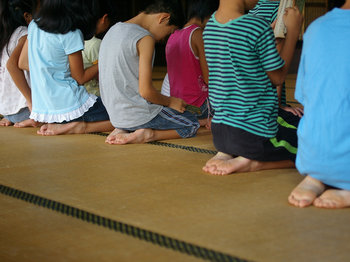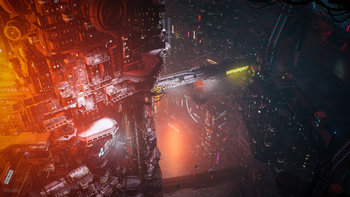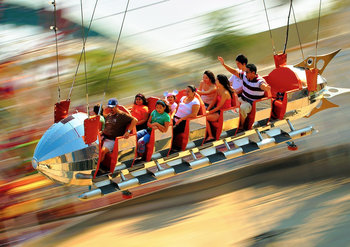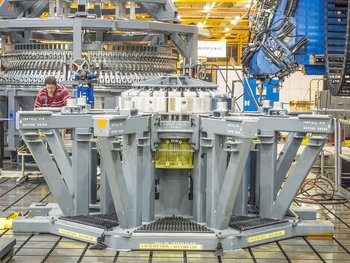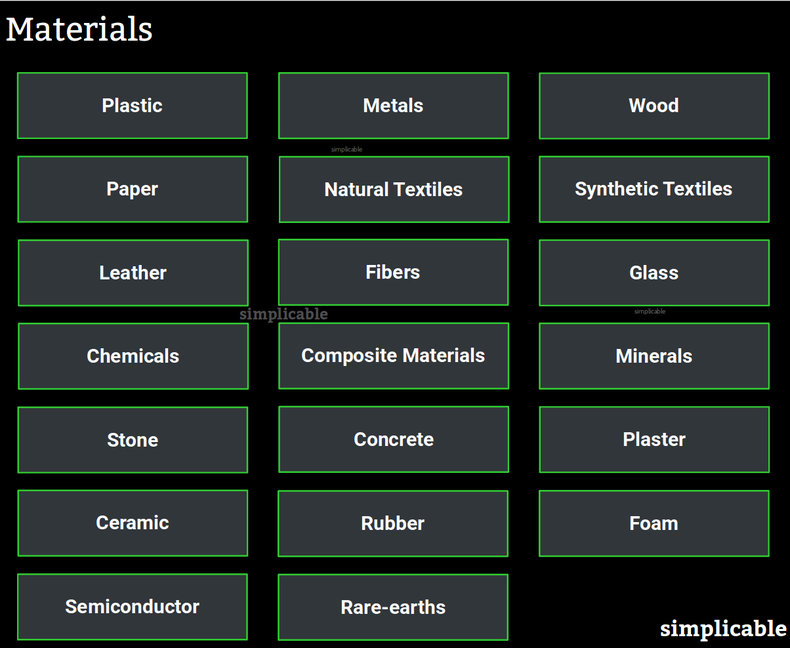
Plastic
A broad category of organic compounds that are molded into a wide variety of parts, components, products and packaging. Plastic is inexpensive and highly versatile and is widely used. It is often negatively perceived as plastic waste commonly ends up in waterways and oceans with chemicals from plastic leaching into water and ending up in food.Metals
Metals and alloys such as iron, aluminum, titanium, copper, tin, nickel, silver, gold, steel, brass and bronze.Wood
Products of woody plants including pine, spruce, oak, elm, cherry, maple, linden, ash, bamboo, rattan and cork. Wood used in construction serves to sequester carbon. It is also a renewable and sustainable resource if forests are managed responsibly.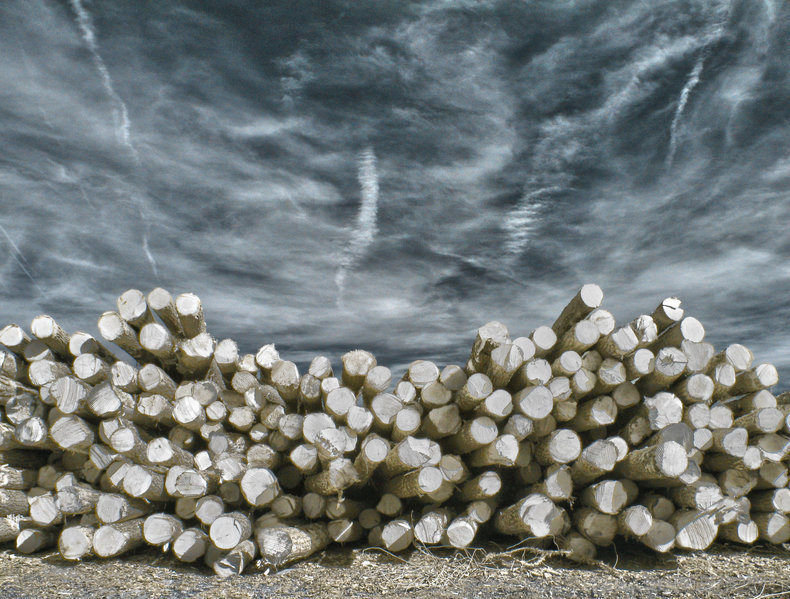
Paper
A highly processed wood product that is used in a wide variety of products such as boxes, packaging, books and toilet paper.Natural Textiles
Flexible natural materials used in clothing, furniture and a variety of other products. Natural textiles include cotton, wool, flax, silk, hemp and cashmere. Textiles are fibers that are typically formed into long threads and woven into cloth.Synthetic Textiles
Textiles produced from chemicals include polyester, acrylic, nylon, spandex and carbon fibre.Leather
A durable and flexible material made from animal skin, mostly cattle.Fibers
Other fiber materials beyond textiles. Natural fibers such as wood fiber are often used to make other materials such as paper and wood products. Synthetic fibers include metallic fibers, carbon fiber, fiberglass and optical fiber.Glass
Glass is a solid material that is often based on the chemical compound silica that is a naturally occurring type of sand. Glass is valued for its transparency and hardness and is used to make a wide range of products including windows, glassware and fibre optic cables.Chemicals
Chemicals and chemical compounds. These include fine chemicals, specialty chemicals, organic chemicals, inorganic chemicals, petrochemicals and pharmaceuticals. Common uses of chemicals include plastics, synthetic fibers, synthetic rubber, dyes, paints, coating, fertilizers, pesticides, cosmetics, soaps, cleaning agents and medicines. Chemicals are also used in mining, manufacturing and agricultural processes.Composite Materials
Combining materials with different properties to produce materials that are strong, light and/or cheap. Examples include reinforced concrete composed of steel and concrete, composite wood made from wood fiber and adhesives, reinforced plastic such as plastics strengthened with carbon fiber and ceramic matrix composites made with ceramics and metal.Minerals
Minerals are naturally occurring chemical compounds. These include talc, gypsum, calcite, fluorite, apatite, quartz, topaz and corundum.Stone
Stones are solid aggregates of minerals such as flint, granite, limestone, sandstone and gems. Small rocks such as gravel and sand are also common materials.Concrete
A composite material made with chemicals, water, minerals, gravel, crushed rocks and sand. Concrete production emits significant amounts of carbon dioxide. However, in theory concrete could be used to sequester carbon.Plaster
A material that is similar to concrete for use in interiors. Often made from gypsum, lime or cement. Plaster is not a strong material that is not used for load-bearing structures. It is easy to shape and is somewhat softer than concrete.Ceramic
A category of non-metallic hard material that includes earthenware, stoneware, porcelain, bone china and boron carbide.Rubber
Natural and synthetic rubbers valued for their stretch ratio, resilience and waterproof qualities.Foam
Materials that have an internal structure that traps air such that they are lightweight. Foams have a variety of applications such as thermal insulation, sound proofing and padding for furniture.Semiconductor
A semiconductor is a type of material that is valued for its electrical properties. Semiconductor materials aren't exactly a conductor such as gold or a insulator such as glass but fall somewhere in-between. They are often made from silicon with controlled impurities added to change the properties of the material for different applications. Semiconductors are primarily used in electronics including computing units and solar panels.Rare-earths
A collection of metals that have various industrial uses. There are 17 rare-earth elements namely cerium, dysprosium, erbium, europium, gadolinium, holmium, lanthanum, lutetium, neodymium, praseodymium, promethium, samarium, scandium, terbium, thulium, ytterbium and yttrium. Despite their name, most rare-earths are plentiful in the Earth's crust but concentrated deposits of rare-earths that are inexpensive to extract and refine are relatively rare.Notes
Foods and water aren't typically considered materials. However, it is increasingly common to use food ingredients in products based on the idea of waste is food.| Overview: Materials | ||
Type | ||
Definition | A substance that people find useful such that it is produced for economic reasons. | |
Related Concepts | ||



